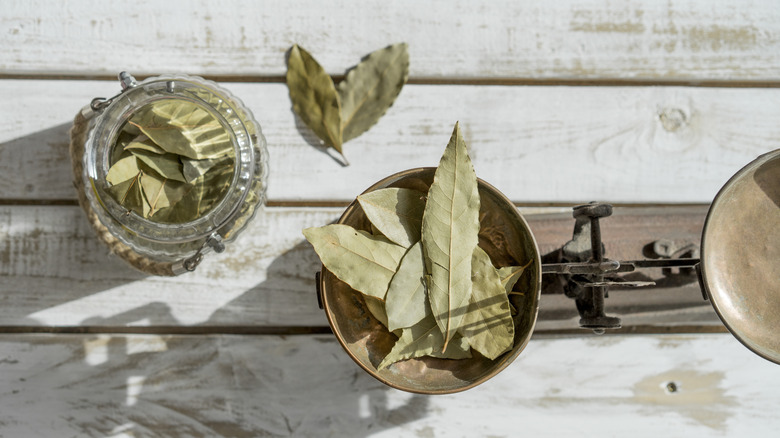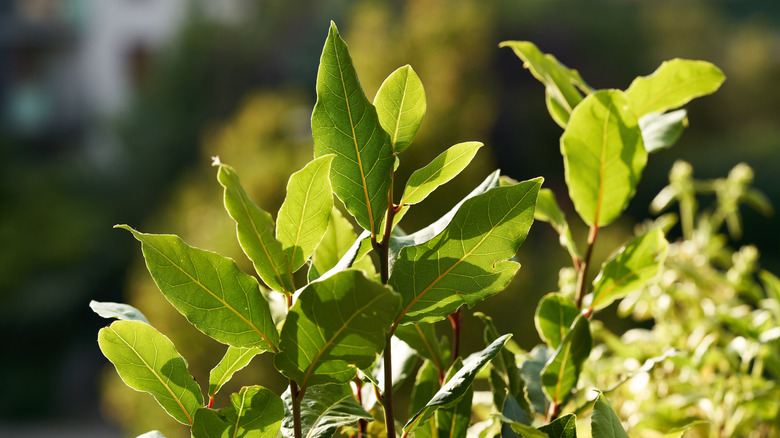Do Bay Leaves Really Add A Significant Flavor Difference To Your Soups, Stews & Sauces?
Whether you're doctoring store-bought broth to make it taste homemade or making a West African-inspired jollof, if it's soupy, stewy, or saucy, it likely calls for a bay leaf or two. But, if you've just run out and your recipe calls for them, can you get away with not including them? (After all, Ina Garten herself isn't so sure bay leaves are necessary.) Food Republic spoke about bay leaves with Erica R. Williams, executive director at A Red Circle, responding on behalf of Chef Queenie Vesey, director of culinary education at A Red Circle. She said, on behalf of Vesey, "As we teach in our A Red Circle Healthy Flavor classes, bay leaf isn't just for tradition — it plays a real role in deepening flavor."
She continued, on behalf of Vesey, "[bay leaves] add this subtle, earthy background note that enhances the full body of a stew or soup." The magic of bay leaves is in their herbaceous subtlety. On behalf of Vesey, Williams said she always tells people: "You don't always taste the bay leaf — but you notice when it's not there. It's like the bassline in a good song — it holds everything together."
Fresh or dry bay leaves: Which should you use and when?
In case you weren't aware, bay leaves can actually be picked and used fresh. They derive from the bay laurel tree, which flourishes in zones 8 through 11 (in case you want to grow your own). What you find in the grocery store spice aisle is just the dehydrated version of those same leaves. So, which version should you use for different recipes? Erica R. Williams, responding on behalf of Chef Queenie Vesey, first explains the difference in flavor, saying, "Fresh bay leaves are more vibrant and give off a slightly floral, almost eucalyptus-type aroma, while dried bay leaves have a more concentrated, woodsy taste."
She continues, on behalf of Vesey, "We prefer dried for our classes at the Farm House, especially when we're teaching stews and soups that simmer for a while." Williams explains on behalf of Vesey that the Farm House's preference stems — no pun intended — from the fact that dry bay leaves are just easier to store (while still maintaining flavor). Since their flavor is more muted, the dry version is better for dishes with longer cook times because the bay leaf taste won't come through too strongly. On the other hand, dishes that are made quickly benefit from fresh bay leaves. Williams, on behalf of Vesey, ends by reminding us that whichever you use, "Be sure to take it out before serving — nobody wants to bite into that!"


